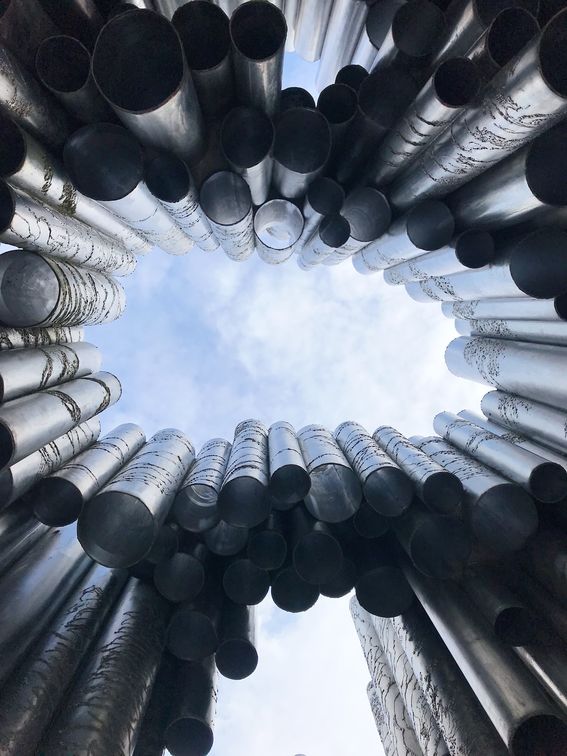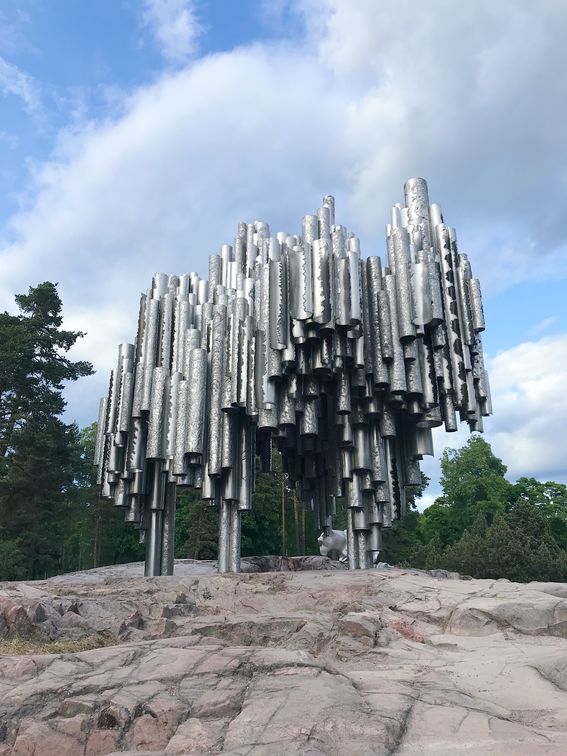Do you see the blue sky? Ponderings on climate poetry
Some years ago, I came across a poetry collection about the current state of the world by Katja Seutu called Jäätyväinen (my interpretation of the name is that it is a play on two words: jäähyväinen = goodbye and jäätyvä = freezing, so perhaps a freezing goodbye). It had one specific poem that has stayed with me to this day and that I go back to every now and again, and which I also think is very relevant to what we study here in our Creative Sustainability program. Unfortunately, the collection is only available in Finnish, but I will do my best to translate it to English (do not judge me too harshly!). So, this is the poem:

English translation |
Finnish original |
|---|---|
It is naturalthat through humanvisible is the blue skyIt is not usualthat it is. |
On luonnollistaettä ihmisen läpinäkyy sininen taivasEi ole tavallistaettä näkyy. |
Katja Seutu (2019), Jäätyväinen, WSOY
How I interpret the poem is that it is a commentary on our effect as humans on the environment and that we have altered it quite significantly. What is natural is not usual. The natural state of things is now a rarity. I think it also implies a kind of harmony where, when the blue sky is visible through human, we exist in the environment in a way that does not impose on the space of others existing in that same environment, but the blue sky has its place and similarly all the nonhumans would have theirs. However, according to the poem usually this is not the case, and you can only see the human dominance and nothing else, which I would say can feel quite accurate for many of us city dwellers.

In this light, I have found many of our courses and events very reassuring of that there is hope for us all yet. We often sit with questions like,
“What is our role as humans in the space?”
"Who are the other users of the space?"
“How do we interact with the different users of the space?”
and in general we practice seeing beyond our own personal experience and the human perspective.
Ultimately, could we even be sustainable designers, engineers, or business professionals, if we ignored the needs of everyone but ourselves? Looking beyond ourselves builds understanding and empathy, which are qualities that not only make us kinder humans but also better professionals who are able to be sensitive and inclusive.
Here, I would like to highlight NODUS Talks as a lecture series to follow and NODUS Sustainable Design Research Group of Aalto University in general as a very interesting group to pay attention to. This fall they hosted a phenomenal online seminar on Multispecies Sustainability given by Emilija Veselova and Elisa Vainio that talked about these exact topics, and I certainly plan on attending any consecutive ones to learn more. You can find the recording of the talk here.
To come back to the poem, perhaps the visibility of the blue sky is a matter of perspective. If I open my eyes to the world outside of me, myself, and I, I can see the blue sky. Regrettably many are blind, some willfully and others unconsciously, but it feels like things are changing. People are wanting to learn, so we should keep talking. We are wanting to learn, so we should keep asking and listening.
We all have the ability to see the blue sky if we only choose to.






